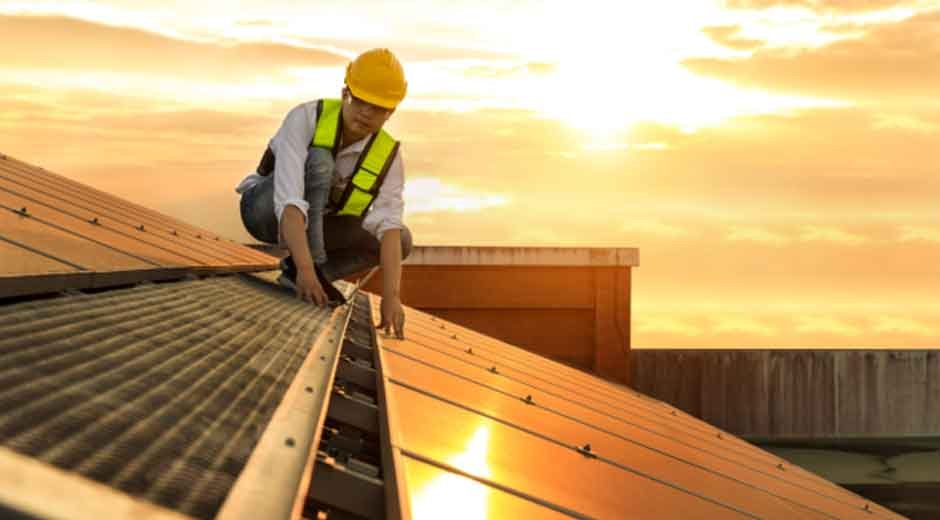Skip to the good bit
ToggleWhen water starts dripping onto the kitchen table during dinner, it’s already too late. By the time leaks appear, the roof damage is often extensive—and costly. Most homeowners don’t think about their roofs until they’re falling apart, but catching problems early can save thousands.
In this blog, readers will discover ten telltale signs their roof might be crying out for help. They’ll learn what to check inside and outside the home, when to call in professionals, and how regular maintenance can extend a roof’s lifespan.
Whether the shingles are brand new or pushing their limits, these tips will help homeowners make better decisions about one of their home’s most critical components.
Why Roof Inspection Matters
Nobody wakes up excited to inspect their roof. But that asphalt shield keeping everyone dry has a limited lifespan, typically 20-25 years for standard shingles. And that’s under ideal conditions, which most homes never experience.
The Pacific Northwest throws everything it’s got at residential roofs—relentless rain, howling windstorms, and those occasional freezing spells that catch everyone off guard. These conditions can be brutal on roofing materials.
In Vancouver, Washington, these weather challenges are all too familiar to homeowners. The expertise of clark county wa roofing contractor becomes invaluable as they’ve seen firsthand how local weather patterns affect different roofing materials and can spot trouble before it turns into a disaster.
10 Warning Signs of Roof Deterioration
1. Missing or Damaged Shingles
After a big windstorm, shingles in the yard aren’t just debris—they’re a red flag. Taking a moment to scan the roof from ground level (with binoculars if available) can reveal bare spots or shingles that are cracked, curled at the edges, or flapping in the breeze.
Even one missing shingle creates a vulnerable spot where water can infiltrate and undermine neighboring shingles. It’s like losing one tile in a game of dominos—soon others start to fail too. That small problem spotted today won’t magically heal itself; it’ll only grow worse with every rainfall.
2. Granules in Gutters
During gutter cleaning, it’s important to pay attention to what’s collecting in there. If there’s what looks like coarse black sand, those are granules from the shingles—essentially their protective coating shedding away.
A brand-new roof might shed some excess granules initially—no cause for alarm with newly installed roofing. But an older roof dumping heaps of granules is like a car losing its brake fluid. It means the protective layer is wearing thin, leaving the shingles exposed and vulnerable to sun damage and water penetration.
3. Sagging Roof Deck
Standing back and looking at the roofline can reveal problems. A roof should run straight and true, not have a gentle dip that resembles an old worn-out couch. A roof should never sag—period.
That depression means the roof decking—the structural plywood beneath the shingles—has been compromised, usually by moisture that’s rotted the wood over time. This isn’t just about leaks anymore; it’s about structural integrity. A sagging roof demands immediate professional attention before more serious damage occurs.
4. Interior Water Stains
Those mysterious brownish circles appearing on ceilings aren’t modern art—they’re water stains. They’re like roof problem billboards hanging inside the home, screaming for attention.
The tricky thing about water stains is that they often appear far from the actual leak source. Water is deceptive, it can travel along rafters and beams before finally dripping onto the ceiling. A small stain doesn’t necessarily mean a small problem. The damage lurking above could be extensive even if the visible evidence looks contained.
5. Increased Energy Bills
An unexpected spike in heating or cooling costs might have the roof as the unlikely culprit. When roofing materials fail or attic ventilation gets compromised, climate control systems have to work overtime.
The roof and attic function as part of a home’s thermal envelope—the barrier that separates the comfortable indoors from the harsh outdoors. When this system starts failing, energy efficiency takes a nosedive. That unexplained jump in utility bills could be the first clue that something’s gone wrong up top.
6. Attic Issues
The attic is like the canary in the coal mine for roof problems. During the daytime, with the lights off, pinpoints of light coming through the roof are actual holes that need fixing immediately.
While there, checking for moisture, mold, or wet insulation is crucial. Even if living spaces are dry, the attic might tell a different story. Proper ventilation matters too—soffit and ridge vents need to remain unblocked to maintain proper airflow that keeps the roof healthy year-round.
7. Moss or Algae Growth
Fuzzy green growth might look charming on a cottage in a fairy tale, but on a roof, moss spells trouble. It’s not just an eyesore—it actively damages roofing materials.
Moss acts like a sponge, holding moisture against the roof’s surface far longer than normal. This extended dampness accelerates shingle deterioration and can eventually lead to leaks. Those black streaks (actually algae) don’t directly damage the roof but signal conditions are ripe for other problems. Both issues tend to start in shaded areas of the roof where moisture lingers longest.
8. Deteriorating Flashing
Those metal strips around chimneys, vents, and roof valleys aren’t just decorative—they’re flashing, the roof’s first line of defense at its most vulnerable points. They should be inspected for rust, cracks, or separation from the roof surface.
Failed flashing is behind a huge percentage of roof leaks. The caulking that seals these metal pieces can crack and deteriorate over time, creating perfect entry points for water. Since flashing is installed at the most vulnerable junctions of the roof, problems here can quickly escalate into significant damage.
9. Gutter Problems
Gutters might seem separate from the roof, but they’re crucial to its health. When gutters clog or pull away from the house, they can’t properly channel water away from the home.
Backed-up gutters force water to pool on the roof edge or spill over sides, potentially damaging fascia boards and even the foundation. That innocent-looking leaf clog could set up a cascade of failures affecting multiple parts of the home. Keeping gutters clean and securely attached prevents these larger issues from developing.
10. Age of Your Roof
Sometimes the most telling sign isn’t visible at all—it’s just the date on the roof warranty. Most asphalt shingle roofs are designed to last 20-25 years, though premium materials may last longer.
If a roof is pushing its expected lifespan, it deserves extra attention. Even without obvious damage, aging materials become more brittle and less waterproof. Being proactive about monitoring and eventually replacing an elderly roof before it fails catastrophically during the next big storm can prevent emergencies.
Comparison: DIY vs. Professional Roof Inspection
| Aspect | DIY Inspection | Professional Inspection |
| Cost | Free (except time) | $200-$600 |
| Thoroughness | Catches obvious problems | Finds hidden issues before they’re visible |
| Safety Risk | Falls are the leading cause of homeowner injuries | Professionals use proper safety equipment |
| Detection Ability | Identifies existing damage | Predicts potential failures before they happen |
| Documentation | Easily forgotten observations | Detailed report with photos for insurance |
| Insurance Value | Usually none | May be required for claims or warranty |
| Frequency Needed | Routine visual checks every few months | Thorough inspection annually |
Conclusion
Remember that the roof is literally what stands between a family and the elements. Investing time in regular inspections and addressing small problems promptly can extend a roof’s life significantly and protect everything beneath it. Staying vigilant means staying dry and avoiding the dreaded ceiling drip that signals bigger problems.
Frequently Asked Questions
How often should I inspect my roof?
Homeowners should visually check their roof twice yearly—when setting clocks for daylight savings is an easy reminder. Inspections after major storms are also essential. Professional inspections make sense annually, especially once a roof passes the 10-year mark.
Can I repair small roof issues myself?
While DIY videos make replacing a shingle look easy, roof work is consistently ranked among the most dangerous home repairs. Even professional roofers respect the risks. Without proper training and safety equipment, roof repairs are best left to insured professionals who won’t risk serious injury over a relatively inexpensive repair.
How do I know if I need a roof repair or a complete replacement?
This depends on damage extent, roof age, and simple math. If an 18-year-old roof needs $4,000 in repairs but replacement costs $10,000, replacement often makes more financial sense. A reputable roofer will walk homeowners through the cost-benefit analysis rather than automatically pushing for the most expensive option.







